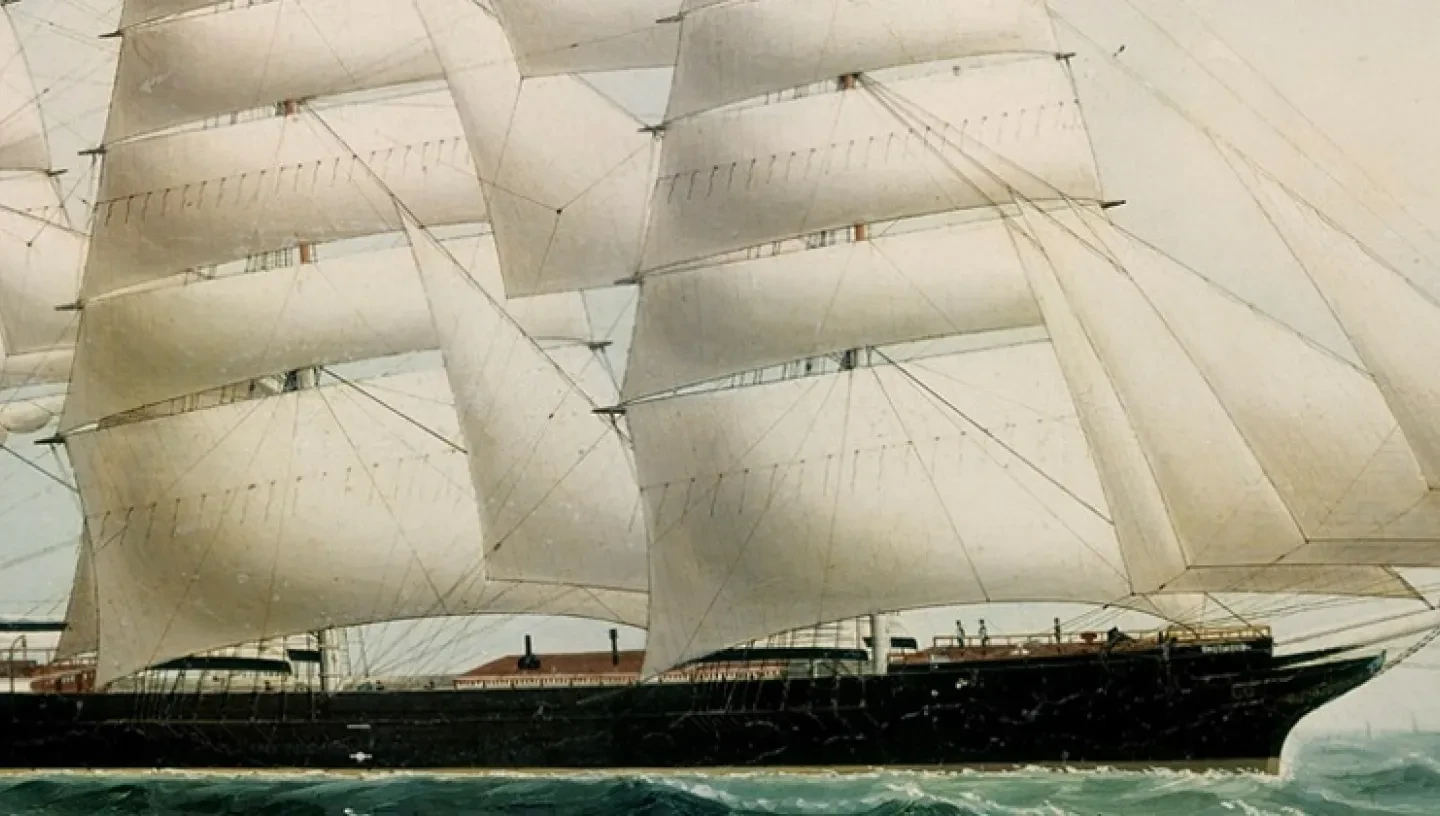
With 2019 marking the 150th birthday of the Cutty Sark, discover the story behind one of its ancestors. What part did The Tweed, an illustrious vessel in its own right, play in the Cutty Sark becoming the fastest ship of her time?
by Jon Earle, Library Assistant
The story of the Cutty Sark is a famous one, with people still flocking from all over the world to see her in person. Few however, are aware of how the ship renowned as the fastest tea clipper ever to have existed, came to be so. Basil Lubbock in his book The Log of the Cutty Sark (RMG ID: PBE7332) stated the tea clipper ‘owed most of her wonderful powers’ to another vessel. This was The Tweed. Originally a paddle steamer, she was transformed into a sailing ship by John Willis, and soon became his favourite ship.

Originally named Punjaub; The Tweed began life in 1854 as a naval frigate operated by the East India Company. Although constructed in the Bombay Dockyard she was designed by Oliver Laing of Deptford, who also designed the Royal Yacht, Victoria and Albert. She went on to take part in the bombardment of Bushehr in 1856 during the Anglo-Persian War, and after a short but distinguished career she became surplus to requirements and was bought by John ‘Jock’ Willis. Rechristened The Tweed and with her engines removed, she soon rose to be the star of Willis’ fleet, becoming his favourite ship and what he considered the fastest ship in the world.
‘[The Tweed was] a ship, I have heard, heavy to look at but of phenomenal speed. In the middle sixties she had beaten by a day and a half the steam mail-boat from Hong Kong to Singapore.'
Joseph Conrad, The Mirror of the Sea

Whilst The Tweed had forged a distinguished career of her own, its legacy will be most remembered for the role she played in the design of the Cutty Sark. The story goes that Willis, so confident in The Tweed’s design, demanded that Hercules Linton, the designer of the Cutty Sark, view the vessel, with the idea of using her as inspiration, if not fully embodying parts of her. Linton was so impressed with The Tweed’s bow that it was removed and transferred to the Cutty Sark. Lubbock corroborates this story whilst attributing much of the new ship’s speed to this addition.
Some have disputed the story, believing The Tweed was only ever an inspiration; and others dismiss her role entirely. Even Linton’s business partner, William Scott-Moncrief, stated in an interview with Lubbock that he had never heard of The Tweed. Knowing this, it’s easy to see how, without conclusive proof and the striking visual differences between the two ships, many assumed the story a myth. However, a recent close comparison of the two vessels by Alan Platt and Bob Sexton revealed that despite variation in the sizes of the ships and allowing for differently shaped stems, both The Tweed and the Cutty Sark share the same shape in the forward quarter of the hull. Whatever the truth, it is clear the Cutty Sark owes a debt of gratitude to a most unlikely of sources, a ship that began life as an Indian-built paddle-steamer.